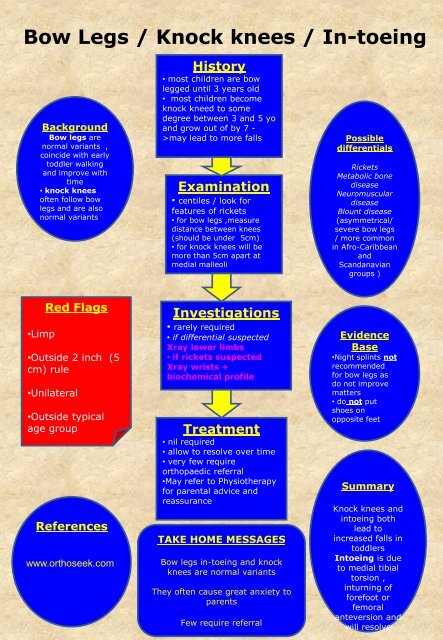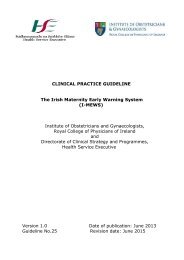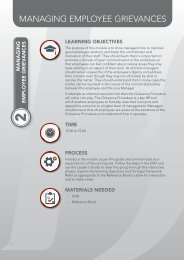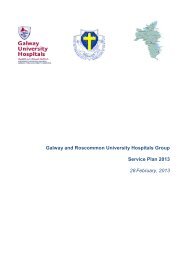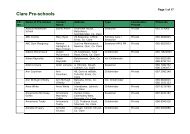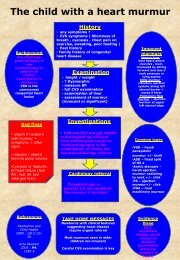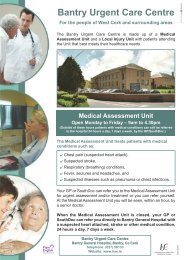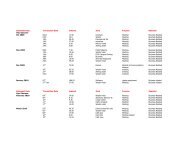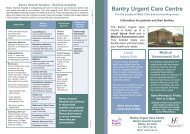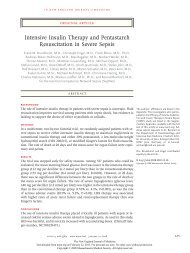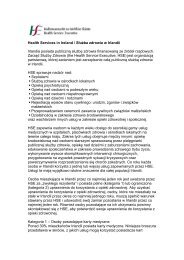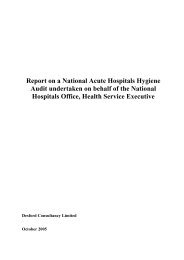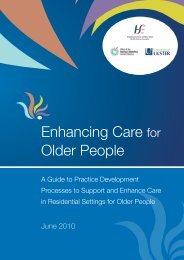Bow Legs / Knock knees / In-toeing
Bow Legs / Knock knees / In-toeing
Bow Legs / Knock knees / In-toeing
Create successful ePaper yourself
Turn your PDF publications into a flip-book with our unique Google optimized e-Paper software.
<strong>Bow</strong> <strong>Legs</strong> / <strong>Knock</strong> <strong>knees</strong> / <strong>In</strong>-<strong>toeing</strong><br />
Background<br />
<strong>Bow</strong> legs are<br />
normal variants ,<br />
coincide with early<br />
toddler walking<br />
and improve with<br />
time<br />
• knock <strong>knees</strong><br />
often follow bow<br />
legs and are also<br />
normal variants<br />
History<br />
• most children are bow<br />
legged until 3 years old<br />
• most children become<br />
knock kneed to some<br />
degree between 3 and 5 yo<br />
and grow out of by 7 -<br />
>may lead to more falls<br />
Examination<br />
• centiles / look for<br />
features of rickets<br />
• for bow legs ,measure<br />
distance between <strong>knees</strong><br />
(should be under 5cm)<br />
• for knock <strong>knees</strong> will be<br />
more than 5cm apart at<br />
medial malleoli<br />
Possible<br />
differentials<br />
Rickets<br />
Metabolic bone<br />
disease<br />
Neuromuscular<br />
disease<br />
Blount disease<br />
(asymmetrical/<br />
severe bow legs<br />
/ more common<br />
in Afro-Caribbean<br />
and<br />
Scandanavian<br />
groups )<br />
•Limp<br />
Red Flags<br />
•Outside 2 inch (5<br />
cm) rule<br />
•Unilateral<br />
•Outside typical<br />
age group<br />
References<br />
www.orthoseek.com<br />
<strong>In</strong>vestigations<br />
• rarely required<br />
• if differential suspected<br />
Xray lower limbs<br />
• if rickets suspected<br />
Xray wrists +<br />
biochemical profile<br />
Treatment<br />
• nil required<br />
• allow to resolve over time<br />
• very few require<br />
orthopaedic referral<br />
•May refer to Physiotherapy<br />
for parental advice and<br />
reassurance<br />
TAKE HOME MESSAGES<br />
<strong>Bow</strong> legs in-<strong>toeing</strong> and knock<br />
<strong>knees</strong> are normal variants<br />
They often cause great anxiety to<br />
parents<br />
Few require referral<br />
Evidence<br />
Base<br />
•Night splints not<br />
recommended<br />
for bow legs as<br />
do not improve<br />
matters<br />
• do not put<br />
shoes on<br />
opposite feet<br />
Summary<br />
<strong>Knock</strong> <strong>knees</strong> and<br />
in<strong>toeing</strong> both<br />
lead to<br />
increased falls in<br />
toddlers<br />
<strong>In</strong><strong>toeing</strong> is due<br />
to medial tibial<br />
torsion ,<br />
inturning of<br />
forefoot or<br />
femoral<br />
anteversion and<br />
will resolve
This algorithm has been produced by the National<br />
Paediatric and Neonatology Clinical Programmes.<br />
It is aimed at medical, nursing and allied health<br />
professionals working in both primary and<br />
emergency care settings.<br />
Revision number: 1.0 Document drafted<br />
by:<br />
National Paediatric<br />
and Neonatology<br />
Clinical Programme<br />
Date of Last Update: June 2013 Document Status: Approved<br />
Approval date: June 2013 Document approved<br />
by:<br />
Faculty of Paediatrics<br />
Clinical Advisory<br />
Group<br />
Paediatrics and<br />
Neonatology Clinical<br />
Advisory Group<br />
Revision date: June 2015<br />
Irish College of<br />
General Practitioners


